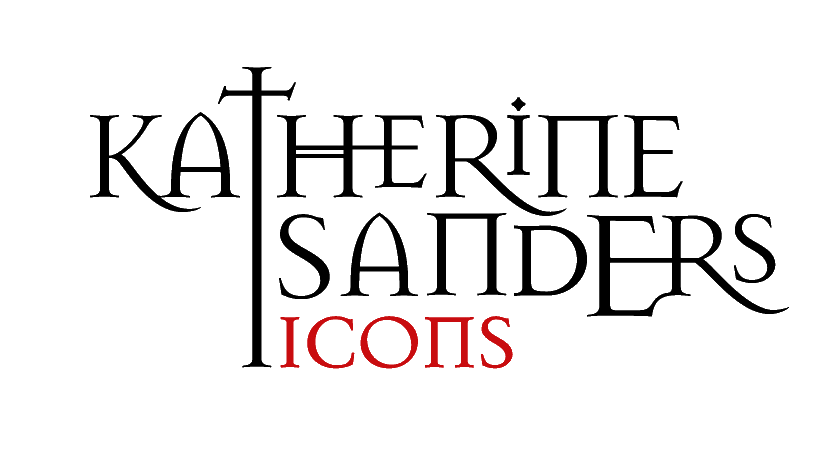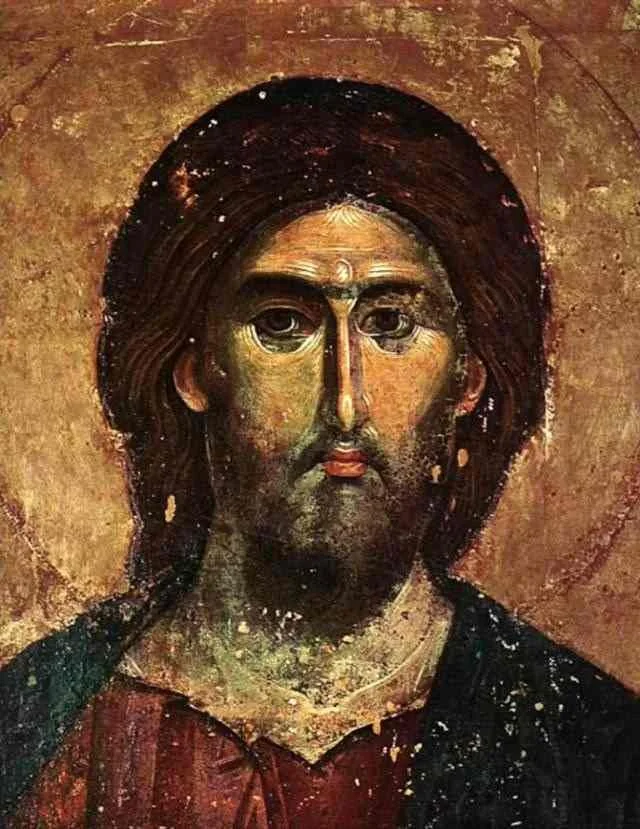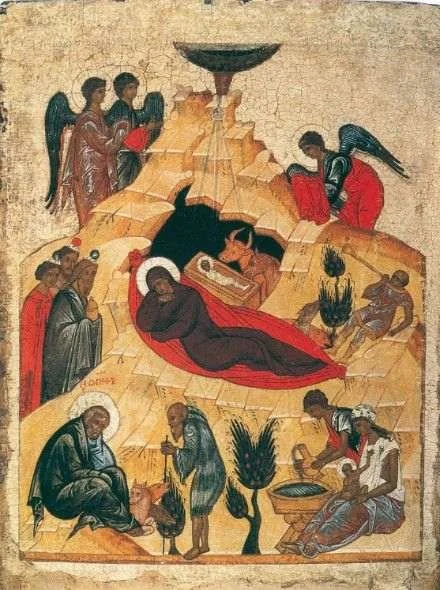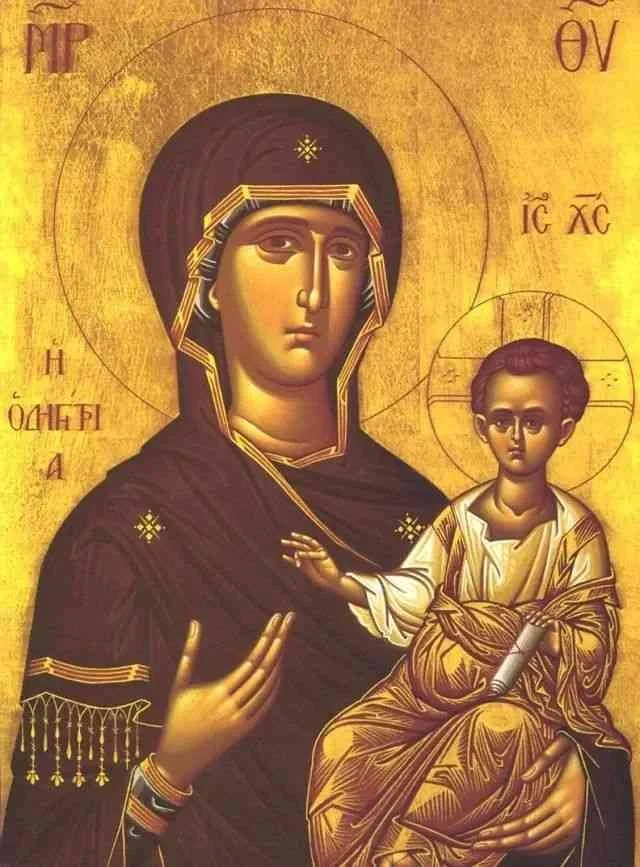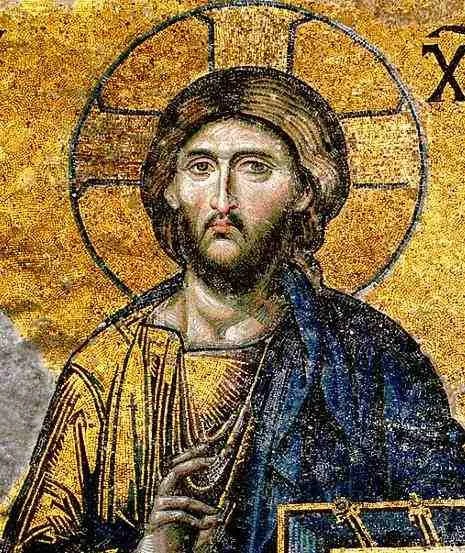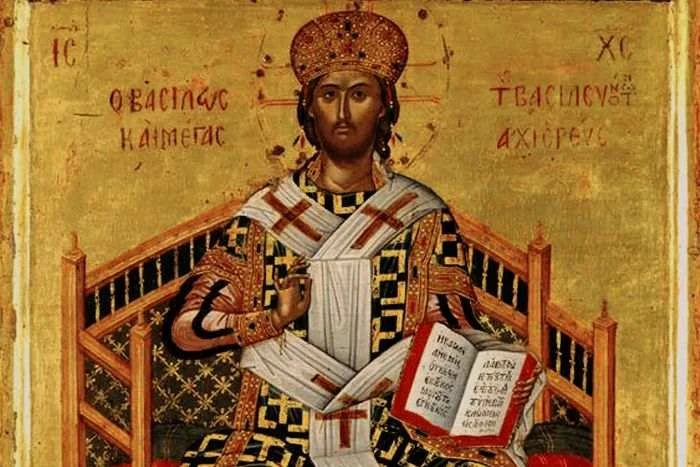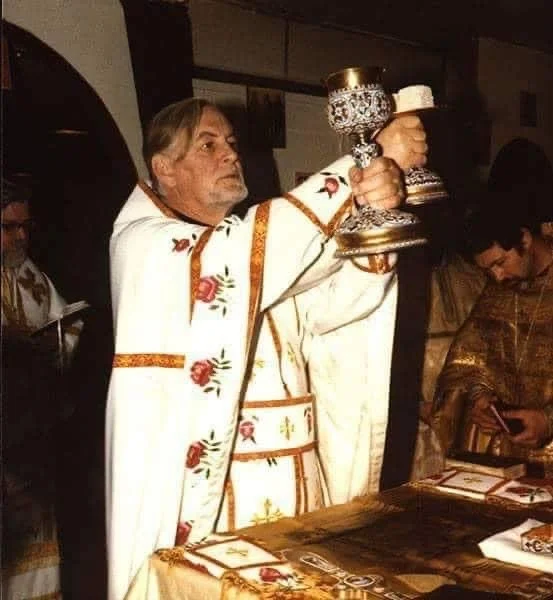Symbols in Icons: Jesus - revealing the myth, meaning and majesty
He’s one of the most recognisable figures in global religious art - from the statue towering over Sao Paulo, to the Crucifixion showing the Cross hanging over the earth by Salvador Dali in the Kelvingrove Museum in Glasgow, images of Jesus are what most people understand to be ‘iconic’.
He’s been shown as a blond curly haired, blue eyed boy and (very controversially) transformed into a figure like George Floyd, with the cross-hair of a gun instead of a halo. The Beatles might be (as) famous as Jesus but I’d argue they’re not yet more recognisable.
Thinking here only about Orthodox Icons of Christ, there are some symbols - and some symbology - that is consistent enough for us to think about it and have a proper understanding of WHY He is shown that way - and why, at least for us Orthodox, using a ‘symbolic’ representation of Christ in another physical form just isn’t acceptable in an icon.
Physical Presence
Christ is shown at three points in His life: as an infant, swaddled tightly in the manger in the Nativity icon; as a young child, in His mother’s arms; and as an adult, whether that is greeting the Samaritan Woman at the well, hanging up on the Cross or in Glory, in the icon of the Resurrection.
He is both fully God and fully Man, so there can be no serious portrayal of Him that doesn’t embody that reality - and icons are fundamentally real, however the style of the painter renders them.
Taking them chronologically, there is little to say about Him swaddled apart from the curious similarity between his swaddling bands and those of Lazarus - it is most likely based on the reality of the width of linen strips and method that was most useful at the time, but of course, we can’t avoid the symbolism. We know that He was born to die (as we all are) and that His mother knew from the moment of His conception that He was no ordinary child.
Even the cave and manger take on echoes of the tomb and the Sepulchre in these icons.
“We see that the Christ child’s body is wrapped ‘in swaddling clothes.’ In icons of Christ’s burial, you will see he is wearing similar bands of cloth. We also see them around Lazarus, in the icon of his raising by Christ. In the Nativity icon, the manger looks much like a coffin. In this way, the icon links birth and death. The poet Rilke says we bear our death within us from the moment of birth. The icon of the Nativity says the same. Our life is one piece and its length of much less importance than its purity and truthfulness.”
Jesus as a child
One of the first things that strikes people looking at the common icons of Christ when He is held in his mother’s arms is how he looks like a strange mini-adult. In size He is small enough to be held, supported in different postures by His loving mother. His face, however, is not that of a normal child.
Christ in these icons wears a philosopher’s robes, often decorated with lines of gold assiste, and holding a scroll. He blesses (when He’s not embracing His mother) with the other hand, as we see in icons of Him as an adult.
Here is the tension, the contradiction or the paradox, of Orthodox iconography: while we show Him as He was, a child, we also show Him at the same time as the Eternal God - He contains within His entirely human body the Word of God, who is and was without beginning. I don’t try to tie myself into knots about trinitarian theology - the Church Fathers wrote so much about the three persons of the Godhead I could never begin to ‘logic’ my way round it and my brain is (to be honest) quite mundane - but the idea that there is within this small boy a cosmic being who was present at the birth of the Universe makes a lot more sense when He isn’t painted as your ‘average’ child.
It is, perhaps, one of the reasons why I am not fond of the modern type of icon showing Christ ‘learning to walk’, as a toddler.
Christ as a grown man in icons
First, Christ is shown normally with dark hair, a beard and brown eyes. There are always exceptions - this is Orthodoxy after all and the one thing about rules is that there will be an exception to pop up somewhere - but the general character of Christ and His portrayal remains the same.
His hair is parted in the centre, with more or fewer curls around his shoulders and His beard is sparse, not falling down to His chest or forming forks and curls as we see in older men. His gaze is direct and - according to the aim and skill of the painter - more or less gentle.
His skin tone is not as dark as we can imagine it would have been - normally, iconographers use yellow as the main flesh tone - but that does not mean He is being painted as a Caucasian. In that respect, almost all humans are given the same colour, with tonal differences. I have seen a few attempts to paint differently with varying levels of success.
His hands are shown blessing, holding the Gospel, pointing (while He teaches) - but they differ according to the style of the iconographer, with some - for example Fr Zenon - showing them as fairly sturdy, capable of being a carpenter - and others, Fr Anthony Gunin - showing them as long, elegant and almost ethereal, according to the style of each.
The Robes of Christ
His robes are different in each ‘type’ of icon - see below for a few which are not widely shown in the West.
Blue and Red - does it really symbolize divine and human?
We are most used to seeing Him in the simple blue and red garments which have been used almost from the earliest icons. Rather too much is made of the ‘Blue for heavenly/divine , red for earthly/human’ symbolism. Yes, that may be true in part. In Byzantine art, however, colour should be understood to have a rhythm, with cool tones next to warm. If you begin to look at - for example the frescoes of Panselinos - you will see this passage of warm/cool across the surface, carrying out gaze and giving a pleasing rhythm. There may or may not be a theological significance but too often, that heaviness of meaning overrides the purpose of the icon - to attract, hold and please the eye, so that we perceive the icon as an entire object of harmony, both in its use of line and colour. For example, if a blue robe strictly mean the person being shown was divine, what does that mean for the multiple figures in the icon of the Nativity shown earlier?
Extreme Humility/Crucifixion
In this icon, Christ is dressed only in his linen loin-cloth, a strip of fabric that was tied around the waist and provided both hygiene and modesty. It is not dissimilar to the type of garment worn throughout the ages where a protective under garment is needed that does not require sewing.
Christ the Bridegroom
In this icon, Christ is shown with a red cloak and His crown of thorns. The red is of course worn by Roman centurions - but it is also the colour of blood and martyrdom. Although the hymnography describes it as ‘purple’, we can understand that to mean the colour red - or perhaps a faded red/purple, as sometimes happens with natural dyes as they are worn in all kinds of weather, as a soldier’s garment would have been.
Christ “The Lord of Glory” or “The Great Hierarch”
In this icon He is shown wearing robes more typically associated with a Bishop or hierarch of the Church - the mitre (a round, dome like hat), the sakkos (robe with embroidered wide sleeves) and omophorion (a long band of fabric, usually decorated with embroidered crosses) - are worn by Bishops. So, in this icon, we see Christ in His role as the true ‘head of the Church’, enthroned and usually holding the Gospel. When the icon is called “The Great Hierarch”, icon Christ again wears clerical robes but in this icon He is shown standing and the Gospel He holds is usually open.
Have you discovered a new icon here that really ‘speaks’ to you? Did you discover that something you believed was - perhaps - not exactly as you’d been told? I would love to know!
Make sure you are in my newsletter group for more information about icons, commissions and more.
My news update goes out no more than once a week.
It is the best way to find out when I will have ready to buy icons available, when I begin work on a new series, if I have a talk or lecture coming up and of course, when my waiting list for the year closes.
Make sure you are kept in the loop by signing up below.
